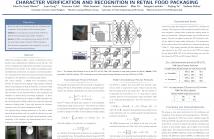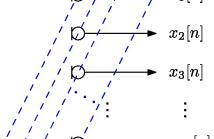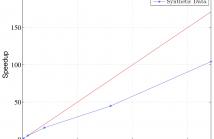- Transducers
- Spatial and Multichannel Audio
- Source Separation and Signal Enhancement
- Room Acoustics and Acoustic System Modeling
- Network Audio
- Audio for Multimedia
- Audio Processing Systems
- Audio Coding
- Audio Analysis and Synthesis
- Active Noise Control
- Auditory Modeling and Hearing Aids
- Bioacoustics and Medical Acoustics
- Music Signal Processing
- Loudspeaker and Microphone Array Signal Processing
- Echo Cancellation
- Content-Based Audio Processing

- Read more about An End-to-End Deep Neural Architecture for Optical Character Verification and Recognition in Retail Food Packaging
- Log in to post comments
There exist various types of information in retail food packages, including food product name, ingredients list and use by date. The correct recognition and coding of use by dates is especially critical in ensuring proper distribution of the product to the market and eliminating potential health risks caused by erroneous mislabelling. The latter can have a major negative effect on the health of consumers and consequently raise legal issues for suppliers.
- Categories:
 94 Views
94 Views
- Read more about Sufficiency quantification for seamless text-independent speaker enrollment
- Log in to post comments
Text-independent speaker recognition (TI-SR) requires a lengthy enrollment process that involves asking dedicated time from the user to create a reliable model of their voice. Seamless enrollment is a highly attractive feature which refers to the enrollment process that happens in the background and asks for no dedicated time from the user. One of the key problems in a fully automated seamless enrollment process is to determine the sufficiency of a given utterance collection for the purpose of TI-SR. No known metric exists in the literature to quantify sufficiency.
- Categories:
 19 Views
19 Views
- Read more about Coalition Game for Emergency Vehicles Re-routing in Smart Cities
- Log in to post comments
Traffic jam is considered as a difficult problem to deal with in many cities around the world due to the continuously
- Categories:
 72 Views
72 Views
- Read more about Impact of Space-Time Covariance Estimation Errors on a Parahermitian Matrix EVD
- Log in to post comments
This paper studies the impact of estimation errors in the sample space-time covariance matrix on its parahermitian matrix eigenvalue decomposition. We provide theoretical bounds for the perturbation of the ground-truth eigenvalues and of the subspaces of their corresponding eigenvectors. We show that for the eigenvalues, the perturbation depends on the norm of the estimation error in the space-time covariance matrix, while the perturbation of eigenvector subspaces can additionally be influenced by the distance between the eigenvalues. We confirm these theoretical results by simulations.
- Categories:
 17 Views
17 Views
- Read more about On Transmitter Polarization Optimization for Target Scattering Matrix Estimation
- Log in to post comments
- Categories:
 23 Views
23 Views
- Read more about A Surveillance System for Drone Localization and Tracking Using Acoustic Arrays
- Log in to post comments
SAM—poster.pdf
- Categories:
 29 Views
29 Views
- Read more about DOA Estimation Using Amateur Drones Harmonic Acoustic Signals
- Log in to post comments
- Categories:
 25 Views
25 Views
One of the fundamental problems for hybrid beamformer design in MIMO systems is that, in Singular-Value-Decomposition (SVD) based beamforming, the analog beamformer is limited to constant modulus. In order to solve this issue, an algorithm is proposed in this paper. Specifically, the parallel data streams are expressed mathematically, and then the math expression of the analog beamformer is achieved through maximizing the power of desired data streams while minimizing the power of interference.
- Categories:
 18 Views
18 Views
- Read more about NESTEROV-BASED ALTERNATING OPTIMIZATION FOR NONNEGATIVE TENSOR COMPLETION: ALGORITHM AND PARALLEL IMPLEMENTATION
- Log in to post comments
We consider the problem of nonnegative tensor completion. Our aim is to derive an efficient algorithm that is also suitable for parallel implementation. We adopt the alternating optimization framework and solve each nonnegative matrix completion problem via a Nesterov-type algorithm for smooth convex problems. We describe a parallel implementation of the algorithm and measure the attained speedup in a multi-core computing environment. It turns out that the derived algorithm is an efficient candidate for the solution of very large-scale sparse nonnegative tensor completion problems.
- Categories:
 6 Views
6 Views